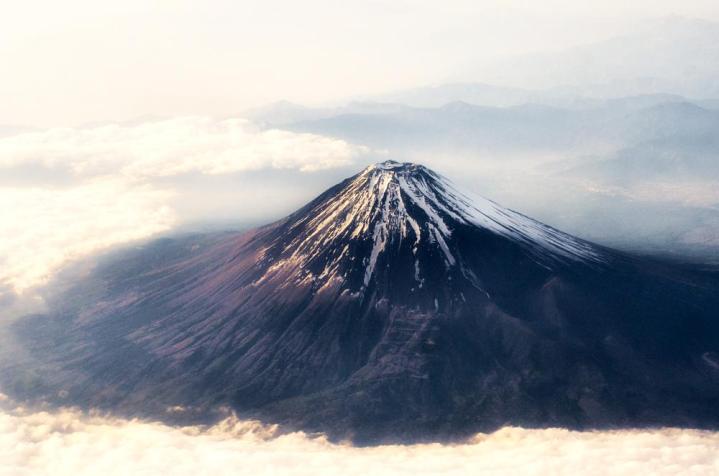
Every summer, thousands of hikers head to Mount Fuji to embark on what for many will be the most ambitious climb of their lives.
At 3,776 meters, Mount Fuji is Japan’s highest mountain, with outdoor enthusiasts attracted by its distinctive volcanic-cone shape and its special place in the nation’s culture. People come from across the country and far beyond, and the fact that no special climbing equipment is needed means that anyone with a reasonable level of fitness and a decent pair of hiking boots can complete the course to the summit.
Every year, however, a number of people do get into difficulties while tackling the mountain, whether it’s respiratory issues, physical injuries (several thousand accidents were reported in 2017), or becoming lost after accidentally leaving the trail.
Up to now, helicopters or search parties might be sent out in cases where a climber goes missing on Mount Fuji, but Japanese mobile phone carrier KDDI revealed this week it’s been working on a drone-based system for future search-and-rescue missions on the mountain.
According to the Japan Times, a recent trial involving KDDI, weather information provider Weathernews, and Yamap, which develops smartphone map apps, successfully located a “missing” hiker on the mountain using a drone.
Utilizing new tools capable of tracking and predicting weather conditions, the drone pilot chose the most efficient flight path to search for the hiker, with the on-board camera providing data for a full assessment of the situation before passing on the information to the rescue team.
KDDI’s remotely controlled flying machine has a top speed of 40 mph and can fly in winds of up to 60 feet per second, according to the Times. Further development of the drone could see it incorporate a speaker and a microphone so that rescuers can communicate directly with the climber to gather more information about their immediate circumstances.
KDDI says it intends to begin using its rescue drone when Mount Fuji’s climbing season starts again in the summer of 2019.
Ongoing advances in drone technology make the flying machine a powerful tool for search-and-rescue operations around the world.
Kitted out with useful gear such as thermal imaging cameras, a rescue system using drones is relatively inexpensive to set up. More importantly, the machines can be deployed quickly, which is vital when mere minutes can be the difference between life and death.
Two recent examples of drone-enabled rescues include a dramatic incident in Hawaii in May that took place as lava poured from the Kilauea volcano, and another in the U.K. in February when police deployed a drone to search for — and save — a missing man who was found unconscious in a ditch.


